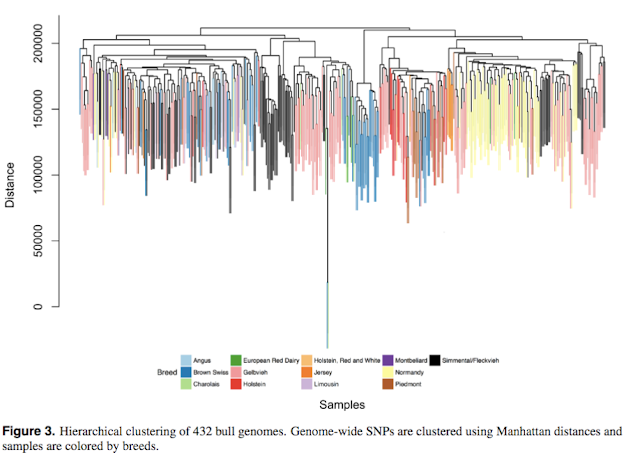Reich:
https://genetics.med.harvard.edu/reich/ ... lcome.html
From there:
Massive migration from the steppe was a source for Indo-European languages in Europe”
(Link to PDF:
https://genetics.med.harvard.edu/reich/ ... e14317.pdf )
The supplementary reading (Supplement 11) which is at the end of a 30 MB download is worth reading.
(found somewhere on this page:
http://www.nature.com/nature/journal/v5 ... 14317.html )
The upshot is that since they have ancient European DNA from various eras, they can say that there was a major influx of early farmers from Anatolia into Europe around 8000-7000 years ago; and there was a major migration from the steppe into Europe around 5000-4500 years ago. "...these migrants acconted for at least 3/4 of the ancestry of the Corded Ware people in Germany and much of the ancestry of other Late Neolithic/Bronze Age populations of Germany and present-day northern Europeans".
"Thus, the main argument in favor of
the Anatolian hypothesis (that major language change requires major migration) can now also be
applied to the Steppe hypothesis. While we cannot go back in time to learn what languages the
migrants spoke, it seems more likely than not that the Corded Ware people we sampled spoke the
languages of the people who contributed the great majority of their ancestry (Yamnaya), rather than
the local languages of the people who preceded them. Thus, our results increase the plausibility that
the Corded Ware people and those genetically similar groups who followed them in central Europe
spoke a steppe-derived Indo-European language. More generally, our results level the playing field
between the two leading hypotheses of Indo-European origins, as we now know that both the Early
Neolithic and the Late Neolithic were associated with major migrations."
"However, we can definitely reject that the breakup of Indo-European occurred as late as 4000 years ago, as by ~4500 years ago the migration into Europe had already taken place. Moreover, this migration clearly resulted in a large population turnover, meaning that the Steppe hypothesis does not require elite dominance to have transmitted Indo-European languages into Europe. Instead, our
results show that the languages could have been introduced simply by strength of numbers:
via major migration in which both sexes participated".
---- My note - the older date I think starts creating problems for the traditional historical linguists' clocks.
"The Anatolian hypothesis becomes less plausible as an explanation for the origin of all Indo-
European languages in Europe, as it can no longer claim to correspond to the only major
population transformation in European prehistory, and it must also account for the language
of the steppe migrants. However, the Anatolian hypothesis cannot be ruled out entirely by our
data, as it is possible that it still accounts for some of the major branches of the Indo- European language family in Europe, especially the branches of the south where the proportion of steppe ancestry today is smaller than in central and northern Europe".
"An important caveat to using ancient DNA to make arguments about the origins of languages is that
prior to the invention of writing, we have no way to directly tie ancient cultures to a language.
Nevertheless, by establishing that major migrations or exchanges of genes occurred, we identify
movements of people that would have been plausible vectors for the spread of languages, and we can
establish some periods in time as the most plausible ones for language spread. Thus, genetic data can
change the balance of probabilities among competing hypotheses as we outline above."
"It is still possible that the steppe migration detected by our study into Late Neolithic Europe might account for only a subset of Indo-European languages in Europe, and other Indo-European languages arrived in Europe not from the steppe but from either an early “Neolithic Anatolian” or later “Armenian plateau” homeland."




